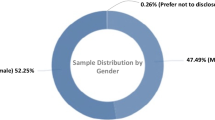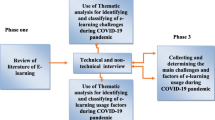Abstract
e-Services help in fostering the development of a knowledge society as more citizens and businesses can access, adopt and use government services through online channels. Existing evidence in Mauritius, however, shows low usage of online government services. The goal of this research consisted of developing a framework to guide government agencies in Mauritius in increasing the likelihood of success and uptake of e-Services. This study uses a novel approach, i.e. the Real-Time Delphi method based on a consensus of expert opinions as the main research method to identify critical success factors influencing the user uptake of e-Services. Moreover, it not only proposes a framework as a solution but also operationalises the framework into a tool which can be used in practice to predict the likelihood of take-up of an e-Service implemented by a Government agency. Additionally, the tool was made flexible so that it can be used not only in the Mauritian context but can also be adapted to reflect the context of other countries. Government policy-makers can leverage on the developed framework to formulate better policies and guidelines for the successful take-up of online public services in Mauritius. Furthermore, e-Service owners can use the tool to evaluate their e-Service strategy and identify priority areas where resources and effort have to be dedicated so that their e-Services can be successfully adopted and used by citizens. The validity and effectiveness of the tool was evaluated using existing e-Services in Mauritius having varying user uptake and the results were found to reflect to a great extent the prevailing uptake situation of existing e-Services.







Similar content being viewed by others
References
Amberg M, Markov R, Okujava S (2005) A framework for valuing the economic profitability of e-government. In: Proceedings of International conference on e-government, Dan Remenyi, Academic Conferences Ltd, Ottawa, Canada, pp. 31–41
Berntzen L (2014) Measuring the Impact of eGovernment services. The Eighth international conference on digital society. https://www.thinkmind.org/download.php?articleid=icds_2014_2_50_10195 Accessed 21 Nov 2017
Cap Gemini Ernst & Young (2002) Online availability of public services: how does europe progress? Web Based survey on electronic public services (overall report Oct 2001–Oct 2002)
Colesca S (2009) Increasing e-trust: a solution to minimize risk in e government adoption. J Appl Quantitative Methods 4(1):31–44
European Commission (2015). Future-proofing eGovernment for a digital single market. Final report. June 2015. https://ec.europa.eu/digital-single-market/en/news/eu-egovernment-report-2015-shows-online-public-services-europe-are-smart-could-be-smarter. Accessed 20 Sept 2017
Gilbert D, Balestrini P, Littleboy D (2004) Barriers and benefits in the adoption of e-government. Int J Public Sect Manage 17(4):286–301. https://doi.org/10.1108/09513550410539794
Gillwald A, Islam B (2011) National information & communication technology strategic plan (NICTSP) 2011–2014: towards I-Mauritiushttp://mtci.govmu.org/English/Documents/NICTSP20112014.pdf. Accessed 24 June 2017
Gordon TJ (1994) The delphi method. Futures research methodology, 2. http://fpf.ueh.edu.vn/imgnews/04-Delphi.pdf. Accessed 18 Oct 2017
Gordon TJ (2003) The Delphi method. In: Glenn JC, Gordon TJ (eds) Futures research methodology version 2.0. American council for the united nations university, Washington
Gordon TJ (2009) The real-time delphi method. Futures research methodology version, 3, p 19. http://www.econ.uba.ar/unai/archivos/actividades/30_de_octubre/Real_Time_Delphi_Ted_Gordon.pdf. Accessed 18 Oct 2017
Government of Mauritius (2016a) Cabinet decisions—7 April 2016http://pmo.govmu.org/English/cabinetoffice/Pages/default.aspx. Accessed 24 June 2017
Government of Mauritius. (2016). MRC inventors’ day: technology and innovation part of the growth strategy to make Mauritius a thriving economy. http://www.govmu.org/English/News/Pages/MRC-Inventors%E2%80%99-Day-Technology-and-innovation-part-of-the-growth-strategy-to-make-Mauritius-a-thriving-economy.aspx. Accessed 14 Nov 2017
Heeks R (2006) Implementing and managing eGovernment. An international text. Sage, London
International Telecommunication Union (ITU). (2016). ICTs for a sustainable world#ICT4SDG. from: http://www.itu.int/en/sustainable-world/Pages/default.aspx. Accessed 07 Aug 2017
Kumar V, Mukerji B, Butt I, Persaud A (2007) Factors for successful e-government adoption: a conceptual framework. Electron J e-Gov 5(1):63–76
Lanvin B (2008) Where is e-Government going in 2020? e-leaders conference 2008, OECD. http://www.insead.edu/facultyresearch/centres/elab/publications/documents/Whereise-governmentgoingin2020BLanvinv1.2_000.pdf. Accessed 28 March 2017
Li H, Suomi R (2009) A proposed scale for measuring e-service quality. Int J U-E-Service Sci Technol 2(1):1–10
Lindgren I (2012) Towards a Conceptual framework for identifying public e-service stakeholders: on where to start looking. In: Scholl HJ et al. (eds), Electronic government and electronic participation. Joint Proceedings of Ongoing Research and Projects of IFIP EGOV and IFIP ePart 2012. Trauner Verlag, Kristiansand, Norway
Lindgren I (2013) Public e-service stakeholders: a study on who matters for public e-service development and implementation. http://www.diva-portal.org/smash/get/diva2:616838/FULLTEXT01.pdf. Accessed 18 Oct 2017
Mahadeo JD (2009) Towards an understanding of the factors influencing the acceptance and diffusion of e-government services. Electron J e-Gov 7(4):391–402
Ministry of Information and Communication Technology (2012) National broadband policy 2012–2020, Government of Mauritius. http://mtci.govmu.org/English/Documents/NationalBroadband.pdf. Accessed 24 June 2017
Ministry of Information and Communication Technology (2013). e-Government strategy 2013–2017, central informatics Bureauhttp://mtci.govmu.org/English/Documents/eGovStrategyfinalv201393.pdf. Accessed 24 June 2017
National Audit Office (2015). Report of The director of audit on the accounts of the Republic of Mauritius for the year ended 31 December 2014. http://nao.govmu.org/English/ReportsandPublications/Pages/AnnualReport-yr2014-mtius.aspx. Accessed 24 June 2017
OECD (2009) OECD E-government studies rethinking e-government services: user-centred approaches, OECD publishing, Paris. http://www.oecd.org/gov/digital-government/rethinkingegovernmentservicesuser-centredapproaches.htm. Accessed 12 Jan 2018
OECD (2011) Uptake of e-government services, in Government at a Glance 2011, OECD publishing http://dx.doi.org/10.1787/gov_glance-2011-55-en. Accessed 24 June 2017
Okoli C, Pawlowski SD (2004) The delphi method as a research tool: an example, design considerations and applications. Inf Manage 42:15–29
Preston CC, Colman AM (2000) Optimal number of response categories in rating scales: reliability, validity, discriminating power, and respondent preferences. Acta psychologica, 104(1):1–15. https://lra.le.ac.uk/bitstream/2381/3937/1/Optimal%20Number%20of%20Response%20Categories.pdf. Accessed 18 Oct 2017
United Nations (2004). Global e-government readiness report 2004 towards access for opportunity, department of economic and social affairs, New York. https://publicadministration.un.org/egovkb/portals/egovkb/Documents/un/2004-Survey/Complete-Survey.pdf. Accessed 20 Sept 2017
Vencatachellum I, Pudaruth S (2010) Investigating e-government services uptake in Mauritius: a user’s perspective. International Research Symposium in Service Management, Mauritius, pp 1–19
Author information
Authors and Affiliations
Corresponding author
Rights and permissions
About this article
Cite this article
Betchoo, H., Halkhoree, R., Santally, M.I. et al. Assessment tool for e-services take-up (ATEST): a small Island states context. Int. j. inf. tecnol. 11, 187–201 (2019). https://doi.org/10.1007/s41870-018-0264-3
Received:
Accepted:
Published:
Issue Date:
DOI: https://doi.org/10.1007/s41870-018-0264-3




